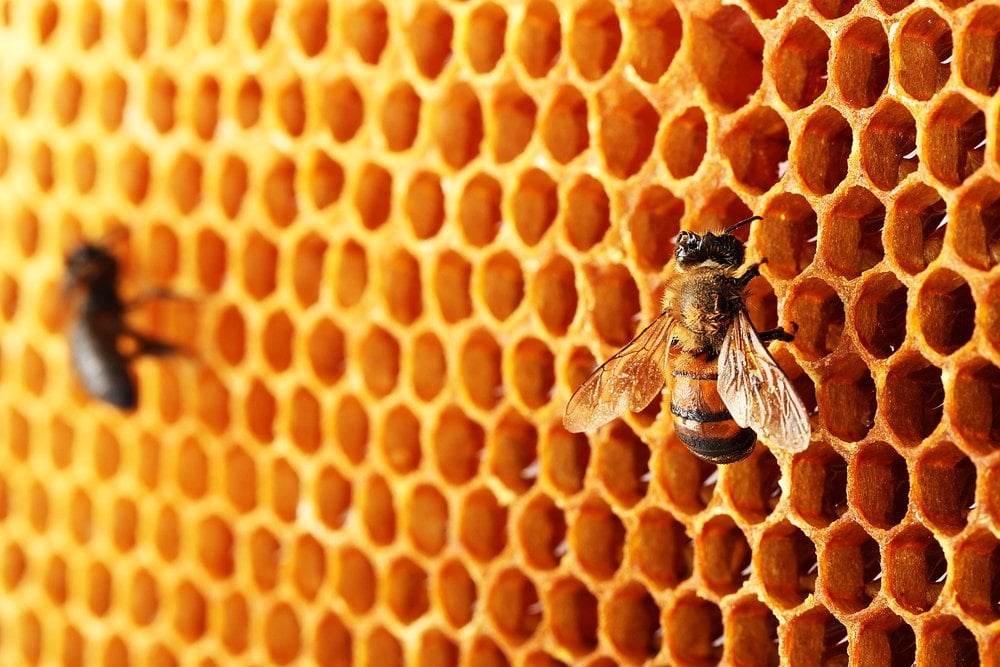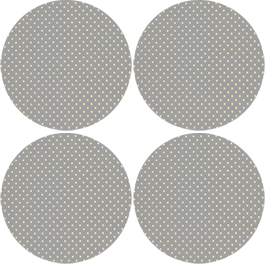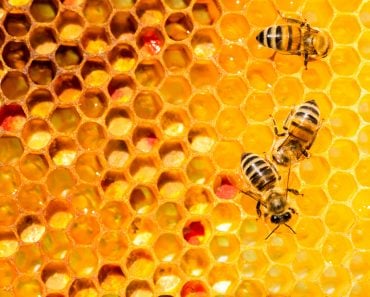Table of Contents (click to expand)
Bees make hexagonal shaped honeycombs because they are the most efficient way to store honey and wax. Hexagons fit together tightly and use the least amount of wax.
If you’ve ever looked at a beehive (from a distance, that is), then you’ve probably noticed that there are small dark chambers on the surface of the beehive that form an almost identical pattern. Why are bees fond of making these shapes for their home and why are these hexagonal shapes the only ones that bees chose? Why didn’t they begin using some other shape for their beehive?

Recommended Video for you:
Why Do Bees Need The Honeycomb?
Bees need a place where they can not only rest, but also store their honey. To do this, bees build honeycombs. Bees need honey to sustain the lives of their young ones and to hold the honeycomb together, so a secure storage space is essential. It takes thousands of trips for a bee to collect even a very small amount of honey, so it makes sense that they make such an impressive structure to ensure that there will be no loss of collected honey after so much flying about.
A Hexagon Makes Sense
Perhaps you can visualize bees sitting around in a circle, trying to figure out the best way to ensure the safety of their hive and their valuable asset – honey. Who knows, maybe they actually did that millions of years ago (but probably not).

Bees require a space to store nectar (that they have collected from flowers) and protect it until it turns into honey. To do this, they build small storage spaces or cells (like a jar) which are just big enough to accommodate a bee inside and can also be used as a storage space. These cells are made of wax, but bees want to use as little wax as possible, as producing wax requires a lot of hard work, but they also want to maximize nectar-storing space. Essentially, bees are looking for a design that has maximum storage space for honey with minimum input in terms of their valuable wax.
The shape that bees around the world choose is a hexagon.
Why Only A Hexagon?
First of all, hexagons are pretty easy to stack side-by-side without disturbing the geometry of the entire structure. This means that many bees can simultaneously work on the honeycomb and the process can be done efficiently. Also, the hexagons fit very tightly and neatly next to each other, allowing absolutely no leak in the entire structure by minimizing space waste.

But why don’t bees choose some other shape, like a circle or a square?
If a honeycomb is made by combining many circles, then there will be a small space left between every adjacent circles This is because the area of contact between adjacent circles is very small, but why not a square or a triangle?
Well, a hexagon is the closest shape to a circle, as far as appearance is concerned and the shape necessary for a bee to enter. However, bees actually have a more mathematical reason for their design. Since bees need the maximum space using the least amount of wax, hexagons fit perfectly. They take up the least wax in terms of surface area of all the walls, while still offering the most space to store honey. No shape is better for these efficiency calculations, and bees naturally did this over the evolutionary course of millions of years and thousands of generations.

Who would have imagined that bees are so much more than buzzing insects with a nose for flowers, they’re also mathematical geniuses!













